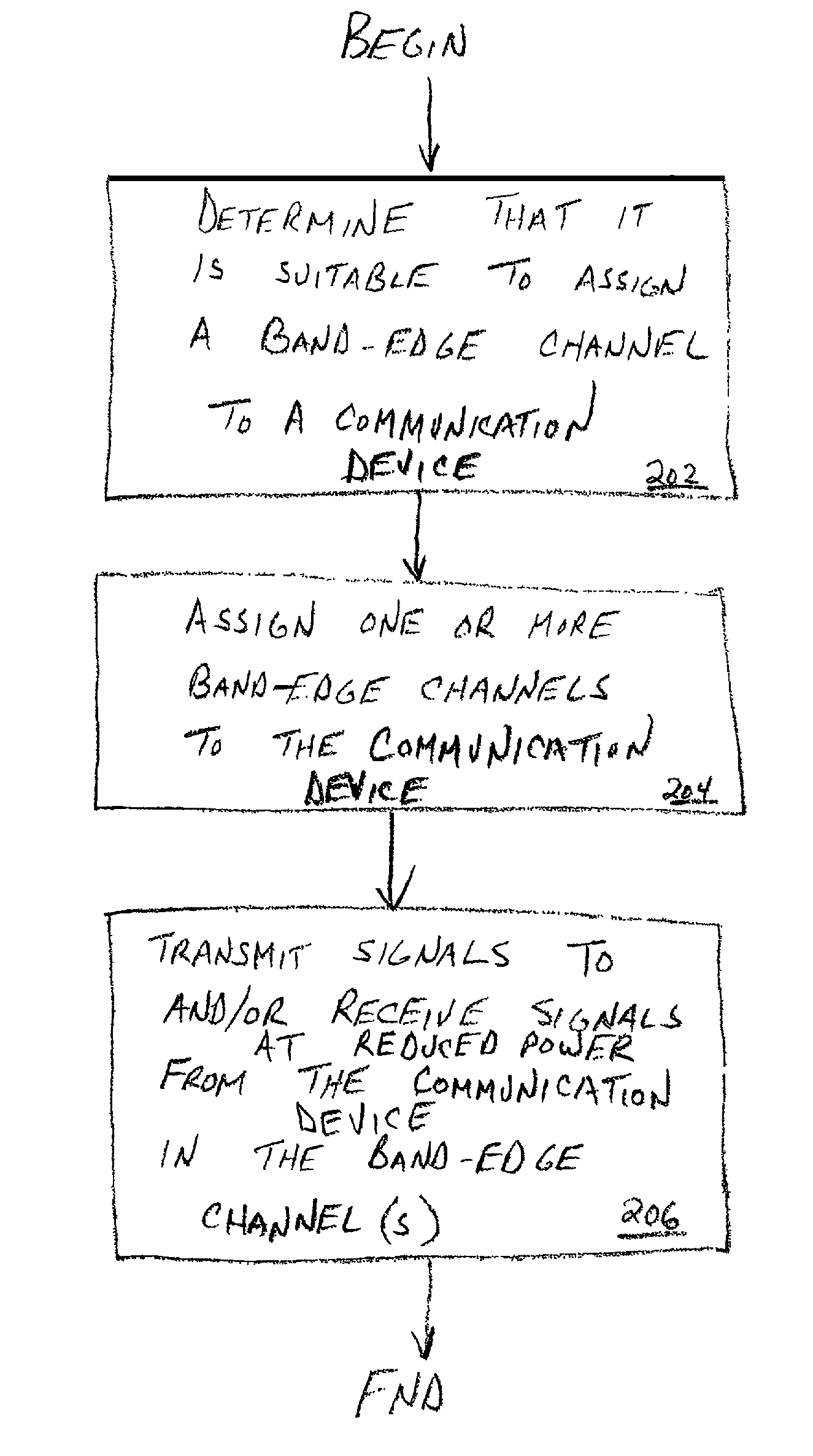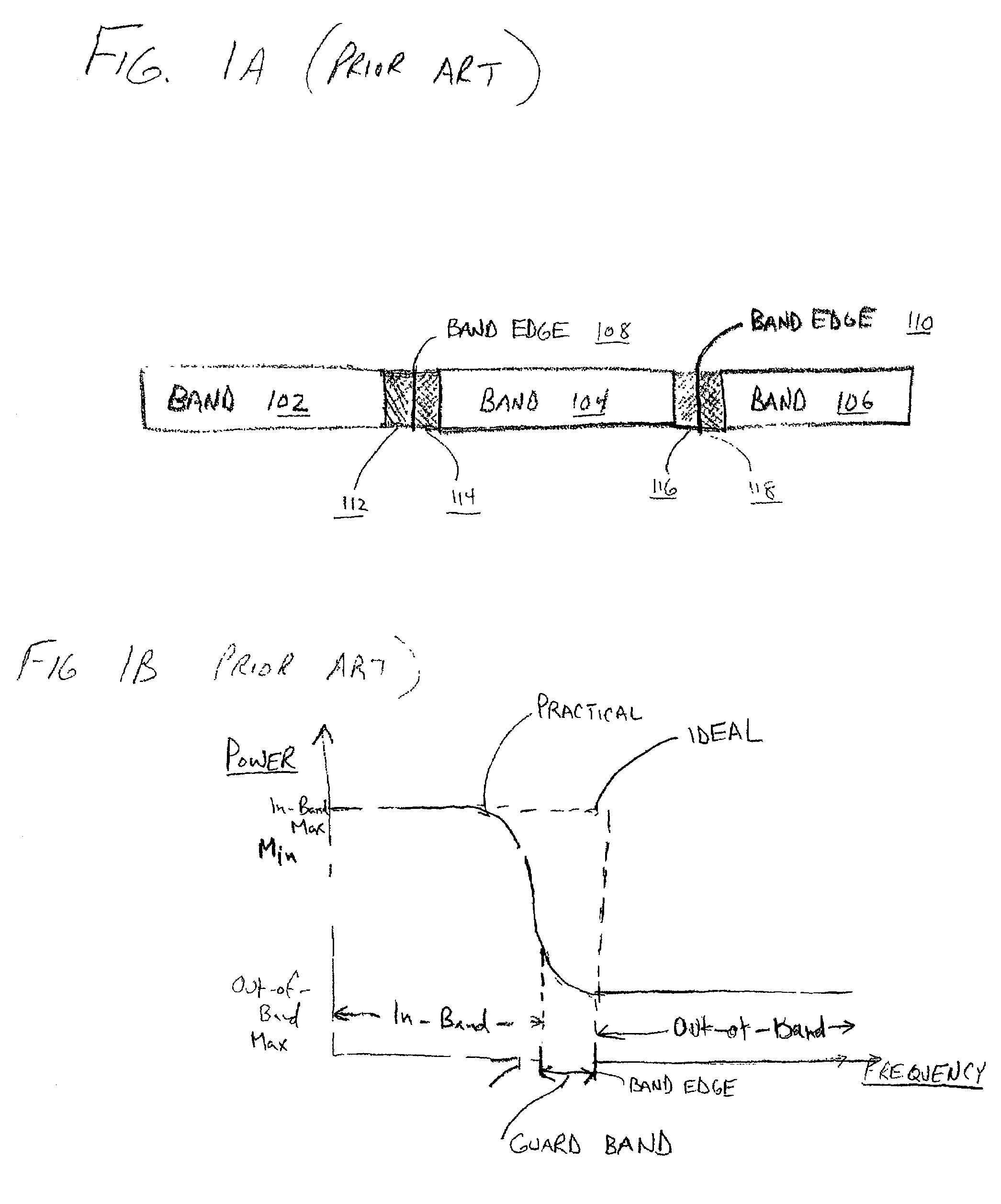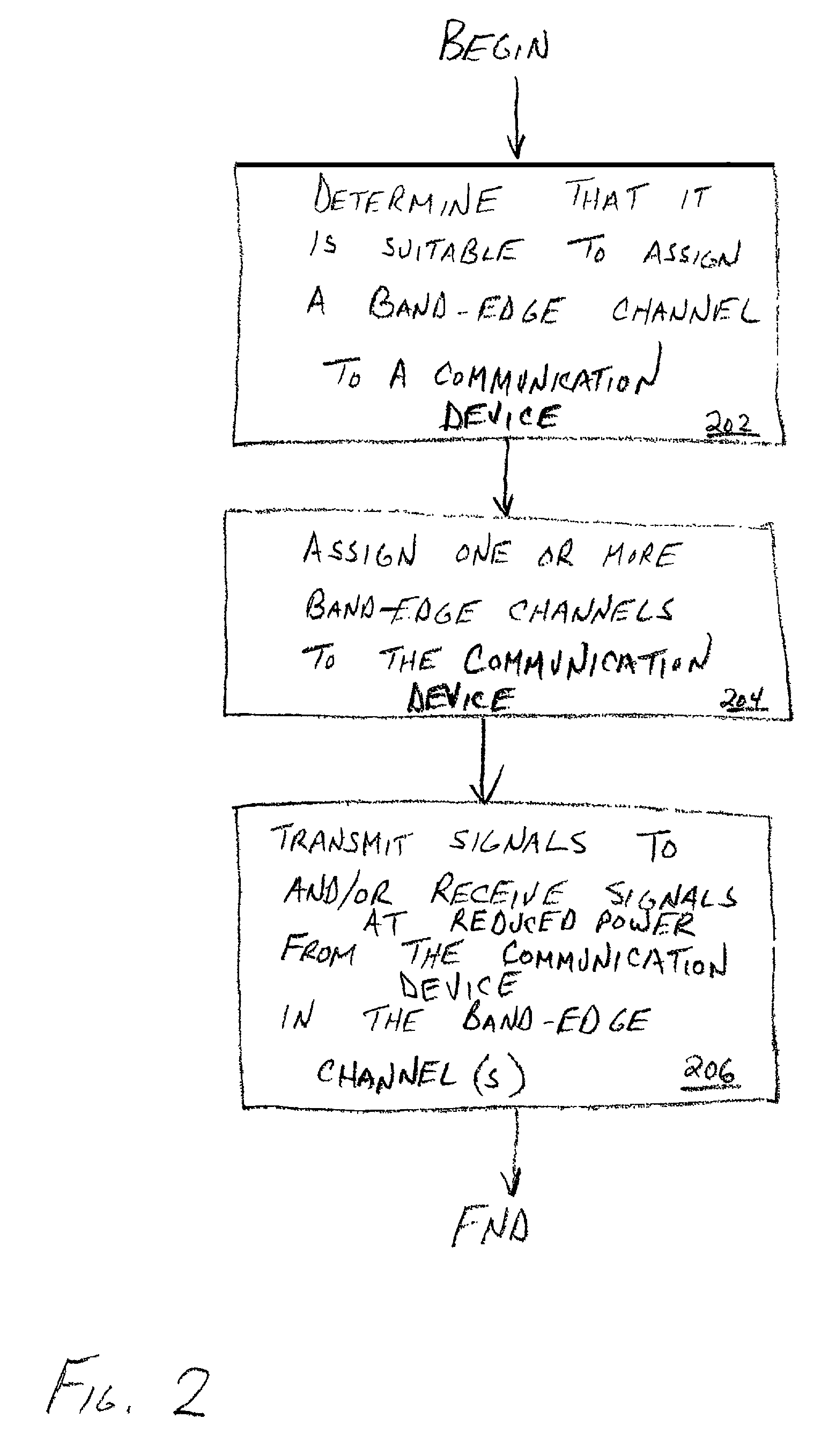Method and apparatus for increasing spectral efficiency using mitigated power near band-edge
a spectral efficiency and band-edge technology, applied in the field of wireless communications, can solve the problems of increasing spectrum allocation, increasing cost, and limiting the utilization of wireless applications, so as to increase the spectral efficiency of communications systems, reduce power levels, and effectively waste.
- Summary
- Abstract
- Description
- Claims
- Application Information
AI Technical Summary
Benefits of technology
Problems solved by technology
Method used
Image
Examples
Embodiment Construction
[0020]The present invention provides a method and apparatus for improving spectral efficiency while mitigating the effects of inter-band interference by allowing reduced power transmission to take place near the band edge (i.e., in a band-edge channel). In accordance with one aspect of the invention, transmission power is reduced near a band edge relative to transmission power further from the band edge. In accordance with another aspect of the invention, two or more devices in communication with each other and which experience performance above a threshold (as measured by one or both of the devices) will be assigned a (in-band) band-edge channel in which to transmit at relatively reduced power relative to two or more communication devices that experience performance below the threshold (or another threshold). In the latter instance, those devices that experience relatively worse performance will utilize relatively greater transmit power in one or more (in-band) non-band-edge channe...
PUM
 Login to View More
Login to View More Abstract
Description
Claims
Application Information
 Login to View More
Login to View More - R&D
- Intellectual Property
- Life Sciences
- Materials
- Tech Scout
- Unparalleled Data Quality
- Higher Quality Content
- 60% Fewer Hallucinations
Browse by: Latest US Patents, China's latest patents, Technical Efficacy Thesaurus, Application Domain, Technology Topic, Popular Technical Reports.
© 2025 PatSnap. All rights reserved.Legal|Privacy policy|Modern Slavery Act Transparency Statement|Sitemap|About US| Contact US: help@patsnap.com



